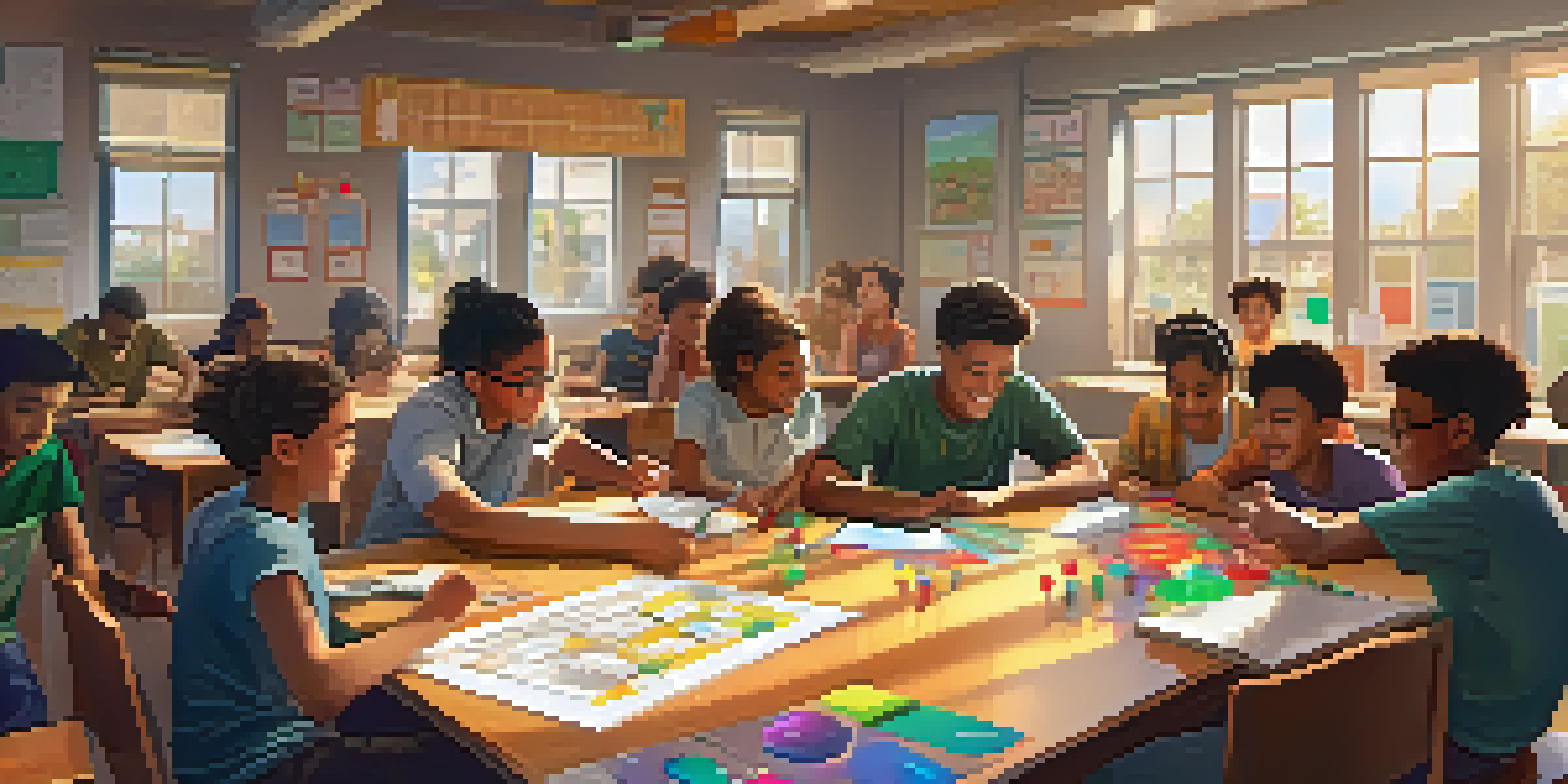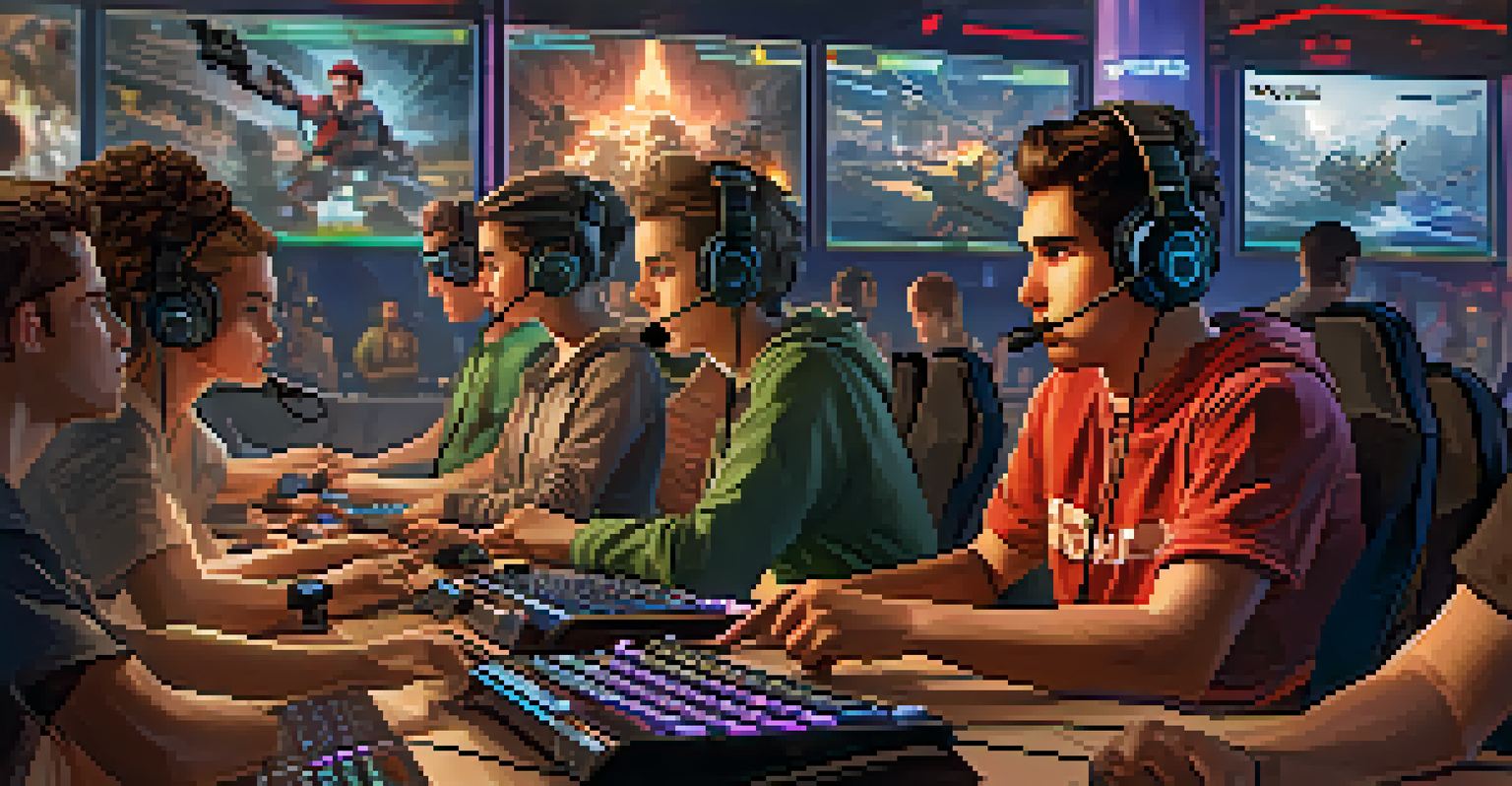Collaborative Learning through Interactive Gaming Platforms

Understanding Collaborative Learning in Gaming
Collaborative learning is an educational approach that emphasizes teamwork and shared goals. In the context of gaming, it harnesses the power of multiplayer platforms to encourage players to work together towards a common objective. This method not only enhances problem-solving skills but also fosters communication and social interaction among participants.
Collaboration allows us to know more than we are capable of knowing by ourselves.
When players engage in games designed for collaboration, they learn to strategize collectively, often encountering challenges that require diverse skills and perspectives. This shared experience can deepen their understanding of the material, making learning more engaging and effective. As they navigate through levels and quests, players naturally develop a sense of camaraderie and mutual support.
Moreover, the interactive nature of gaming keeps learners motivated and invested in their progress. Unlike traditional learning environments, gaming allows for real-time feedback and adaptation, which can be particularly beneficial in reinforcing concepts and skills. Ultimately, collaborative gaming creates a dynamic and immersive learning experience.
Key Features of Interactive Gaming Platforms
Interactive gaming platforms are designed with specific features that facilitate collaboration. Tools like voice chat, shared objectives, and in-game rewards encourage players to communicate and strategize effectively. These features create a virtual space where learners can express ideas freely, enhancing their overall experience.

One notable feature is the ability to form teams or groups within the game. This allows players to assign roles based on their strengths, promoting a sense of accountability and teamwork. For example, a player skilled in strategy might take on a planning role, while another who excels in quick thinking might handle on-the-fly decisions.
Benefits of Collaborative Gaming
Collaborative gaming enhances critical soft skills, maintains high engagement, and provides immediate feedback for effective learning.
Additionally, many platforms offer tutorials and resources that help players understand not only the game mechanics but also the underlying concepts being taught. By integrating educational content seamlessly into gameplay, these platforms make learning enjoyable and accessible, ensuring that all participants can engage meaningfully.
Benefits of Collaborative Learning Through Gaming
One of the primary benefits of collaborative learning through gaming is the development of critical soft skills. Players learn to communicate effectively, manage conflicts, and build leadership qualities as they work together to overcome challenges. These skills are invaluable in both academic and professional settings.
Learning is a treasure that will follow its owner everywhere.
Furthermore, the immersive nature of games helps to maintain high levels of engagement. Unlike traditional methods where attention may wane, the interactive aspects of gaming keep learners actively involved. This sustained engagement can lead to better retention of information and a deeper understanding of complex concepts.
Another significant advantage is the immediate feedback players receive during gameplay. This instant reinforcement helps learners identify areas for improvement and adapt their strategies accordingly. Such real-time learning can be incredibly beneficial, as it fosters a growth mindset and encourages resilience in the face of challenges.
Examples of Collaborative Gaming Platforms
There are several popular gaming platforms that exemplify collaborative learning. For instance, games like 'Minecraft' allow players to build and explore together, fostering creativity and teamwork. In this sandbox environment, learners can collaborate on projects, share resources, and develop problem-solving skills in a fun, engaging way.
Another example is 'Among Us,' which requires players to work together to complete tasks while navigating the challenge of identifying an imposter. This game enhances critical thinking and communication, as players must discuss and deduce who among them is sabotaging their efforts. It encourages an environment where players must articulate their thoughts and reason together.
Challenges in Gaming Learning
Ensuring equal participation and managing varying skill levels are key challenges in collaborative gaming environments.
Lastly, educational platforms like 'Kahoot!' transform quizzes into interactive games, promoting collaboration through competition. Participants can join forces to answer questions correctly and learn from each other’s knowledge, making the learning process both enjoyable and effective.
Challenges in Collaborative Gaming Learning
While collaborative gaming offers many benefits, it also presents challenges that must be addressed. One major concern is ensuring that all players are equally engaged and contributing. In some cases, a dominant player may overshadow others, leading to an imbalance in participation and learning opportunities.
Another challenge is the potential for frustration when players have varying skill levels. Beginners may struggle to keep up with more experienced teammates, which can hinder their confidence and enjoyment. It's essential for platforms to incorporate features that accommodate different skill levels, encouraging a supportive environment.
Additionally, managing distractions in a gaming environment can be difficult. With numerous stimuli competing for players' attention, maintaining focus on learning objectives is crucial. Educators and facilitators should guide players in setting clear goals to ensure that the collaborative experience remains productive.
The Role of Educators in Gaming Environments
Educators play a pivotal role in integrating collaborative gaming into the learning process. They can design curricula that incorporate interactive games, ensuring that educational objectives align with gameplay. By doing so, they create a structured environment where students can learn through play.
Moreover, educators can facilitate discussions around the gaming experience, helping students to reflect on their collaboration and problem-solving strategies. This reflection can deepen their understanding of the concepts being taught and encourage them to think critically about their interactions.
Educators' Role in Gaming
Educators are crucial in integrating gaming into curricula and facilitating reflection on collaborative learning experiences.
Finally, educators should remain open to feedback from students regarding their gaming experiences. This feedback can inform future iterations of collaborative gaming activities, making them more effective and enjoyable for all participants.
The Future of Collaborative Learning in Gaming
As technology continues to evolve, the future of collaborative learning through gaming looks promising. Advances in virtual reality (VR) and augmented reality (AR) hold the potential to create even more immersive learning environments. Imagine students collaborating in a virtual world where they can interact with 3D models of historical landmarks or scientific phenomena.
Moreover, the integration of artificial intelligence (AI) could personalize gaming experiences, adapting challenges to suit the skill levels of individual players. This customization would ensure that all learners are adequately challenged and supported, maximizing their engagement and learning outcomes.

Ultimately, as interactive gaming platforms become more sophisticated, they will likely play a central role in educational strategies. Emphasizing collaboration and active participation, these platforms can transform the learning landscape, making education more interactive, enjoyable, and effective for future generations.